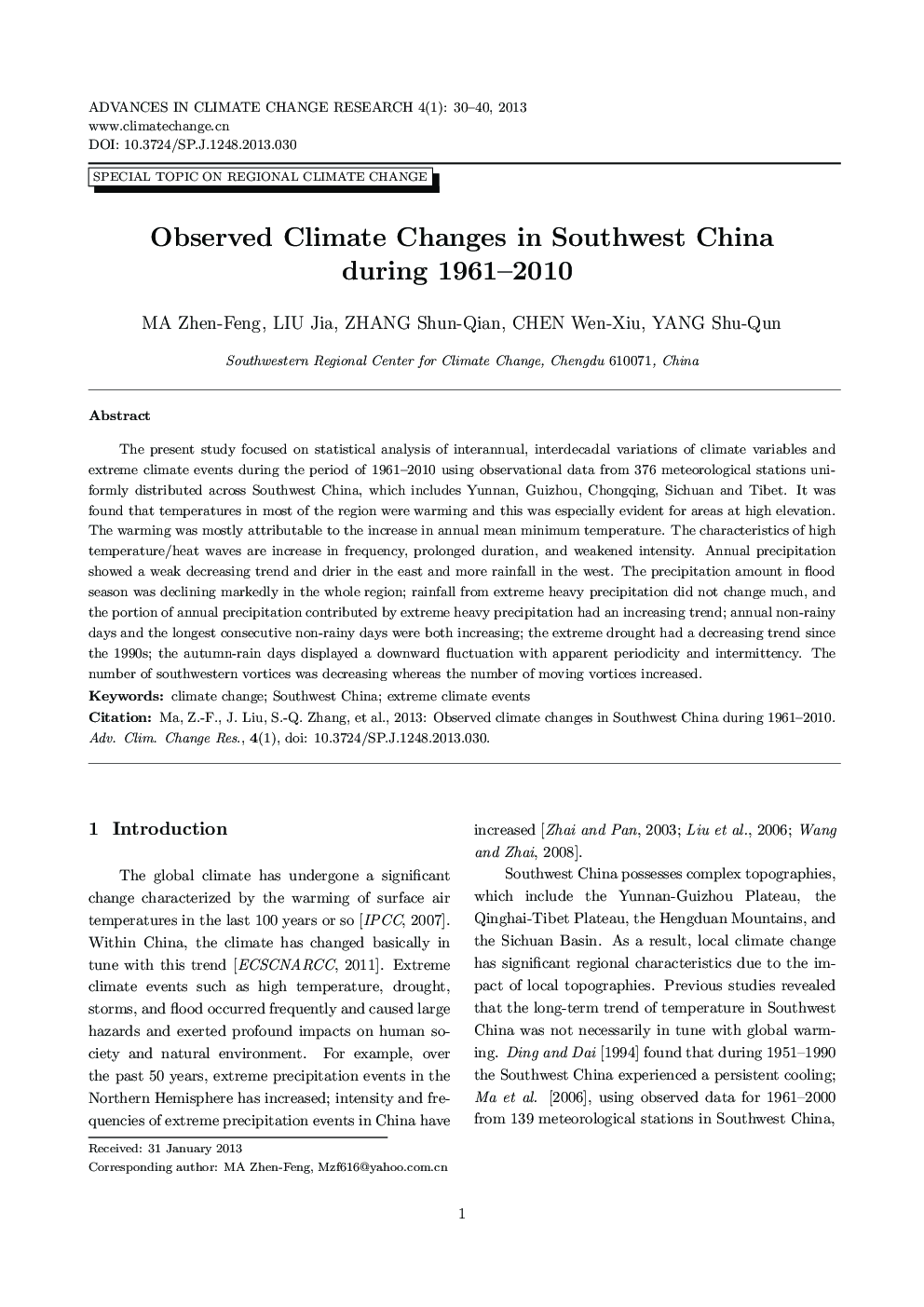| Article ID | Journal | Published Year | Pages | File Type |
|---|---|---|---|---|
| 4673587 | Advances in Climate Change Research | 2013 | 11 Pages |
The present study focused on statistical analysis of interannual, interdecadal variations of climate variables and extreme climate events during the period of 1961–2010 using observational data from 376 meteorological stations uniformly distributed across Southwest China, which includes Yunnan, Guizhou, Chongqing, Sichuan and Tibet. It was found that temperatures in most of the region were warming and this was especially evident for areas at high elevation. The warming was mostly attributable to the increase in annual mean minimum temperature. The characteristics of high temperature/heat waves are increase in frequency, prolonged duration, and weakened intensity. Annual precipitation showed a weak decreasing trend and drier in the east and more rainfall in the west. The precipitation amount in flood season was declining markedly in the whole region; rainfall from extreme heavy precipitation did not change much, and the portion of annual precipitation contributed by extreme heavy precipitation had an increasing trend; annual non-rainy days and the longest consecutive non-rainy days were both increasing; the extreme drought had a decreasing trend since the 1990s; the autumn-rain days displayed a downward fluctuation with apparent periodicity and intermittency. The number of southwestern vortices was decreasing whereas the number of moving vortices increased.CitationMa, Z.-F., J. Liu, S.-Q. Zhang, et al., 2013: Observed climate changes in Southwest China during 1961–2010. Adv. Clim. Change Res.,4(1), doi: 10.3724/SP.J.1248.2013.030.
